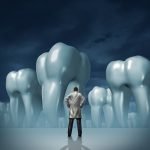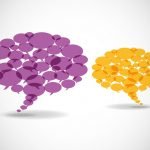Interview With Neil Mages, ND
Mark Swanson, ND
This issue of the The Expert Report interview focuses on Men’s Health, namely Diabetes type-2 and Hypogonadism—its prevalence, diagnosis, and treatment. My guest expert for this interview is Neil Mages, ND, distinguished faculty member at National College of Natural Medicine, Portland, Oregon. His practice specialty offers a particular focus on the naturopathic management of low testosterone levels in men with type 2 diabetes mellitus, who have among the highest prevalences of hypogonadism, especially those with coexisting obesity. The expertise of Dr Mages in this area can serve as a model for the naturopathic management of diabetes in men. On behalf of myself and ND colleagues, we welcome Dr Mages to this segment of the Expert Report.
Dr Mages, please share with us your educational background and current position.
Dr Mages: I graduated from National College of Naturopathic Medicine [now National College of Natural Medicine] in 2001. I am an adjunct faculty member and currently practice at the NCNM clinic. I also teach anatomy and physiology, IV [intravenous] therapy, and alternative therapies in the practical nursing program at Sumner College in Portland.
What led to your interest in men’s health and the link between type 2 diabetes mellitus (T2D), insulin dysregulation, and hypogonadism?
Dr Mages: I had focused on diabetes since medical school, and I learned about hormone therapy working with David Greenspan, ND. I began to incorporate the 2 areas as a way to improve body composition in my male patients with metabolic syndrome and diabetes.
What is the medical definition of hypogonadism?
Dr Mages: Literally, hypogonadism means deficient gonadal function, including both deficient testosterone or sperm production, but in practice it usually refers to the clinical condition that includes both the symptoms and biochemical evidence of testosterone deficiency.
What is the prevalence of T2D among men with hypogonadism (low testosterone levels)?
Dr Mages: It is very high. The 2006 HIM [Hypogonadism in Males] study1 showed 51.2% of diabetics had low testosterone compared to 38.7% of nondiabetics. Another study2 demonstrated a prevalence of over 50% of low or borderline testosterone, with 42% showing symptoms of hypogonadism. Because the symptom picture is nonspecific and often not sexual in nature, it often goes undiagnosed.
Dr Swanson’s comment: The HIM study confirmed the presence of low total testosterone levels in men with diabetes and in men with higher body mass index, showing an inverse relationship. However, this 2006 study1 did not address free testosterone levels in men having obesity with or without diabetes. The subsequent 2010 assessment arm of the HIM study3 confirmed that men with diabetes have a higher prevalence of subnormal free testosterone levels than men without diabetes, both obese and nonobese. Just how common are subnormal free testosterone levels in men, irrespective of diabetes status? The prevalence is as high as 35% and sharply rises to almost 51% in men with diabetes.3 This underlines the critical importance of assessing free testosterone levels in men with diabetes and metabolic syndrome.
Do prediabetic men with metabolic syndrome (MetS) and insulin resistance have a similar prevalence of subnormal free testosterone levels?
Dr Mages: Hypogonadism has definitely been shown to have a strong relationship with metabolic syndrome. Data [A. Guay and A. D. Seftel, unpublished data, 2008] from some clinical practices put it in the range of 36% to 39%. Many studies suggest that androgen deficiency plays a central role in various disorders, including MetS, T2D, insulin resistance, obesity, and erectile dysfunction (ED).4
Is hypogonadism in diabetic men considered primary or secondary? What are the differences between each?
Dr Mages: Primary hypogonadism is due to a testicular defect; it is accompanied by elevated gonadotropins. Secondary hypogonadism is due to deficient pituitary or hypothalamic function; it shows low or inappropriately normal gonadotropins. The association of T2D with hypogonadism is now well established, though the mechanism remains unclear. Hyperinsulinemia appears to reduce testicular production of testosterone directly. Insulin resistance may blunt the HPT [hypothalamic-pituitary-thyroid] axis at the hypothalamus and pituitary. Also, the HPT axis can be inhibited by high levels of estrogens converted from testosterone in adipose tissue.5 According to one author, diabetes may have mixed effects but is more likely to be associated with secondary hypogonadism.6
The presumption has been that low sex hormone–binding globulin (SHBG), the major carrier protein of testosterone in the bloodstream, was mainly responsible for causing the low testosterone measurements in diabetic men as a consequence of insulin resistance. Thus, fewer patients with testosterone deficiency were diagnosed and treated. What does the current research support?
Dr Mages: The issue is complex. Low SHBG is associated with diabetes and can be used to predict diabetes risk; this is likely due to decreased SHBG production caused by increased insulin.7 But even though low SHBG is often accompanied by normal free testosterone, the efficacy of hormone therapy in improving insulin resistance and glucose would seem to dispel the idea that the free fraction of testosterone in diabetics was adequate.
Dr Swanson’s comment: Free testosterone is independent of SHBG and is low in one-third of men with diabetes.8 The SHBG level also rises with age; therefore, free testosterone level decreases more rapidly than total testosterone level in older men.9 This further supports the need to measure free testosterone levels in men with diabetes.
What are the most common symptoms of low testosterone level in the diabetic group?
Dr Mages: In one study,2 erectile dysfunction (ED) was the most common symptom (>70%), and reduced libido was common as well. On the other hand, any of the nonspecific symptoms of hypogonadism, such as fatigue, decreased motivation, increased moodiness and irritability, and decreased muscle strength, can be prominent and should raise suspicion.
Dr Swanson’s comment: Hypogonadism, characterized by low SHBG level with low total testosterone level, affects a significant portion of men with ED and should be evaluated even in the absence of other symptoms. Erectile dysfunction is also a common symptom in men with type 2 diabetes mellitus who have low free testosterone levels.10 In particular, this is often accompanied by visceral obesity, hypertension, and endothelial dysfunction.
Men are often reluctant to discuss their ED and shrinking testicles, even with their physician. Would you consider this to be a silent epidemic when related to the presence of diabetes?
Dr Mages: If we avoid addressing issues around our patients’ sexuality, we are doing them a disservice. Although patients are often reticent, they usually welcome the chance to open up, and an accepting attitude can really help build trust between physician and patient. Whether you consider ED an epidemic or not, I would say that silence and avoidance of the issue are widespread.
Dr Swanson’s comment: Physicians should be alert to the possibility of coexisting hypogonadism in patients who take phosphodiesterase type 5 inhibitors. Men with ED who fail to respond to sildenafil citrate have been shown to have low testosterone levels.11 Testosterone therapy can convert sildenafil nonresponders to responders according to 2 studies.12,13
Should testosterone measurements be included as routine for the evaluation and management of diabetes in men?
Dr Mages: Yes, given the strong correlation between hypogonadism and diabetes in men. I recommend it especially in cases presenting with obesity, decreased muscle mass, ED, and exercise intolerance (which seem to be the vast majority of them). In fact, low testosterone is associated with many chronic illnesses, and testing should be considered in a variety of cases, especially with symptomatic young men.
What are your diagnostic workup outline, tests used, and interpretations for suspected hypogonadism in diabetic men?
Dr Mages: I generally measure salivary free testosterone, which appears to be better than serum levels at reflecting any gains in the tissue level obtained from topical testosterone therapy. However, total and free serum testosterone can certainly be used for screening and monitoring, if you do not suspect an SHBG abnormality. (I have tended not to consider variations in SHBG to be a big concern; however, I am beginning to appreciate that testing SHBG will add to our understanding of its role). Whichever method used, it is important to follow up using the same type of test and lab. I prefer to run a more complete hormone panel that includes estradiol, FSH [follicle-stimulating hormone], and LH [luteinizing hormone]. Testing estrogen in obese men can show increased aromatase activity in adipose tissue. Low LH points to secondary hypogonadism, which would indicate further workup, including thyrotropin, prolactin, and possibly pituitary gland imaging. I like to use screening questionnaires such as ADAM (Androgen Deficiency in the Aging Male), IIEF (International Index of Erectile Function), and IPSS (International Prostate Symptom Score). They give a quantitative score to overall symptom severity and are excellent for monitoring progress once therapy has begun. On PE [physical examination], besides the usual biometric measurements, such as waist circumference, and testing sensation in the feet for diabetic neuropathy, I look for decreased muscle strength, testicular atrophy, and gynecomastia. Before beginning any testosterone therapy, it’s also necessary to get a baseline PSA [prostate-specific antigen], hematocrit, and prostate exam. Other screening tests I consider are iron studies for hemochromatosis, and in patients reporting severe fatigue, I would consider diurnal cortisol to rule out adrenal dysfunction.
What is the accepted lower limit for normal testosterone levels, and when should treatment be initiated?
Dr Mages: Total serum testosterone less than 300 ng/dL is the lower limit recommended by The Endocrine Society. Labs that conduct salivary testing sometimes give age-adjusted levels, which are more precise. For diabetic or metabolic syndrome patients with symptoms of hypogonadism, I will discuss beginning supplementation if their testosterone falls anywhere in the low normal ranges. Given the potential that testosterone therapy has in terms of glycemic control, body composition, and a variety of symptoms, patients are often very interested.
What is your naturopathic functional medicine protocol for treatment? Especially, how do you restore insulin function and testosterone at the same time?
Dr Mages: My treatment of blood glucose problems depends on the severity. It begins with careful home blood glucose monitoring. Treatment starts with low-carbohydrate high-fiber diet and exercise emphasizing resistance training and expands to include, among other things, botanical diabetes formulas, lipoic acid, essential fatty acids, and metformin. If this approach fails to normalize blood sugars early on, we use insulin therapy, beginning with basal insulin glargine. I take a straightforward hormonal approach to treating hypogonadism and diabetes. This usually involves concurrent topical testosterone therapy starting as low as 5 mg daily. We might increase it monthly based on patients’ sexual and muscle strength improvements, with retesting after 3 months.
Does testosterone therapy improve insulin sensitivity per se and lower glycated hemoglobin (HbA1c) level? Does it also help reduce diabetic complications?
Dr Mages: Testosterone treatment has been shown to reduce insulin resistance in obese men14 and T2D,15 as well as HbA1c.
What has been your patient response using your management and treatment protocol?
Dr Mages: The addition of testosterone in those symptomatic patients with low testosterone levels has helped in many ways. Although it’s hard to tease out its effect on insulin resistance, it appears to help the glycemic control and to lower the need for metformin and insulin therapy. In overweight men, it seems to be a key element in getting their exercise to produce improved muscle-fat ratio and lean muscle mass, which is a common obstacle to the lifestyle management of diabetes.
Is this finally getting the needed attention by the medical community and by researchers compared with 20 years ago, when it was almost never brought up?
Dr Mages: It appears to be getting much more widely recognized as a central problem in metabolic problems in men.
Dr Mages, this has been a great “teachable” interview. Your comments and insights are much appreciated. Please add anything else you’d like for our ND colleagues, especially in the way of clinical pearls. We can never get enough of that!
Dr Mages: I would caution practitioners to beware that excessive supplemental testosterone can be converted to estrogen, leading to a point of decreasing benefit and increasing risks. Patients can get too eager and change their dose. Monitor testosterone doses and levels regularly and watch for gynecomastia. The improvements from testosterone treatment must be given time to be seen. Improvements in ED may be noticed in weeks, but glycemic effects and improved waistlines can take 6 months or so. Lastly, the compounded formulations can be substantially less expensive than commercial products.
Dr Swanson’s comment: For additional information on this interview topic, the American Association of Diabetes Educators has published an excellent 10-page men’s health white paper summary and review. Men’s Health, Low Testosterone and Diabetes: Individualized Treatment and a Multidisciplinary Approach, 2008, is available in pdf format at www.diabeteseducator.org.
 Mark Swanson, ND, writes “The Expert Report” column, which is featured in NDNR. Dr. Swanson has over 25 years experience as chief medical advisor, research and technical consultant, and products formulations expert to leading practitioner brand supplement manufacturers. He is a former associate editor for the American Journal of Naturopathic Medicine, national product director, and published researcher. He is a pioneer graduate of Bastyr University, 1984. Dr. Swanson has his private practice specializing in Preventics Care and Functional Medicine, in Sequim, Washington. Contact: [email protected]
Mark Swanson, ND, writes “The Expert Report” column, which is featured in NDNR. Dr. Swanson has over 25 years experience as chief medical advisor, research and technical consultant, and products formulations expert to leading practitioner brand supplement manufacturers. He is a former associate editor for the American Journal of Naturopathic Medicine, national product director, and published researcher. He is a pioneer graduate of Bastyr University, 1984. Dr. Swanson has his private practice specializing in Preventics Care and Functional Medicine, in Sequim, Washington. Contact: [email protected]
 Dr. Mages, ND graduated from the National College of Naturopathic Medicine in 2001. After graduation, he focused on diabetes, studying with author Dr. Richard Bernstein. He worked with Dr. David Greenspan at Greenspan Good Health Center, specializing in women’s health and bio-identical hormone therapy. He currently practices at the NCNM Clinic and teaches at NCNM and Sumner College. His expertise is in diabetes and men’s health.
Dr. Mages, ND graduated from the National College of Naturopathic Medicine in 2001. After graduation, he focused on diabetes, studying with author Dr. Richard Bernstein. He worked with Dr. David Greenspan at Greenspan Good Health Center, specializing in women’s health and bio-identical hormone therapy. He currently practices at the NCNM Clinic and teaches at NCNM and Sumner College. His expertise is in diabetes and men’s health.
References
1. Mulligan T, Frick MF, Zuraw QC, Stemhagen A, McWhirter C. Prevalence of hypogonadism in males aged at least 45 years: the HIM study. Int J Clin Pract. 2006;60(7):762-769.
2. Kapoor D, Aldred H, Clark S, et al. Clinical and biochemical assessment of hypogonadism in men with type 2 diabetes. Diabetes Care. 2007;30:911-917.
3. Dhindsa S, Miller MG, McWhirter CL, et al. Testosterone concentrations in diabetic and nondiabetic obese men [published correction appears in Diabetes Care. 2010;33(8):1911]. Diabetes Care. 2010;33(6):1186-1192.
4. Traish AM, Saad F, Feeley RJ, Guay A. The dark side of testosterone deficiency, III: cardiovascular disease. J Androl. 2009;30(5):477-494.
5. Phillips K, Tanphaichitr N. Mechanisms of obesity-induced male infertility. Expert Rev Endocrinol Metab. 2010;5(2):229-251.
6. Kalyani RR, Dobs AS. Androgen deficiency, diabetes, and the metabolic syndrome in men. Curr Opin Endocrinol Diabetes Obes. 2007;14:226-234.
7. Jameson JL, ed. Harrison’s Endocrinology. New York, NY: McGraw-Hill; 2006:183.
8. Dhindsa S, Prabhakar S, Sethi M, Bandyopadhyay A, Chaudhuri A, Dandona P. Frequent occurrence of hypogonadotropic hypogonadism in type 2 diabetes. J Clin Endocrinol Metab. 2004;89(11):5462-5468.
9. Leifke E, Gorenoi V, Wichers C, Von Zur Mühlen A, Von Büren E, Brabant G. Age-related changes of serum sex hormones, insulin-like growth factor-1 and sex-hormone binding globulin levels in men: cross-sectional data from a healthy male cohort. Clin Endocrinol (Oxf). 2000;53(6):689-695.
10. Diaz-Arjonilla M, Schwarcz M, Swerdloff RS, Wang C. Obesity, low testosterone levels and erectile dysfunction. Int J Impot Res. 2009;21(2):89-98.
11. Kalinchenko SY, Kozlov GI, Gontcharov NP, Katsiya GV. Oral testosterone undecanoate reverses erectile dysfunction associated with diabetes mellitus in patients failing on sildenafil citrate therapy alone. Aging Male. 2003;6(2):94-99.
12. Sabsigh R, Kaufman JM, Steidle C, Padma-Nathan H. Randomized study of testosterone gel as adjunctive therapy to sildenafil in hypogonadal men with erectile dysfunction who do not respond to sildenafil alone. J Urol. 2004;172(2):658-663.
13. Aversa A, Isidori AM, Spera G, Lenzi A, Fabbri A. Androgens improve cavernous vasodilation and response to sildenafil in patients with erectile dysfunction. Clin Endocrinol (Oxf). 2003;58(5):632-638.
14. Mårin P, Krotkiewski M, Björntorp P. Androgen treatment of middle-aged, obese men: effects on metabolism, muscle and adipose tissues. Eur J Med. 1992;1(6):329-336.
15. Boyanov MA, Boneva Z, Christov VG. Testosterone supplementation in men with type 2 diabetes, visceral obesity and partial androgen deficiency. Aging Male. 2003;6:1-7.





